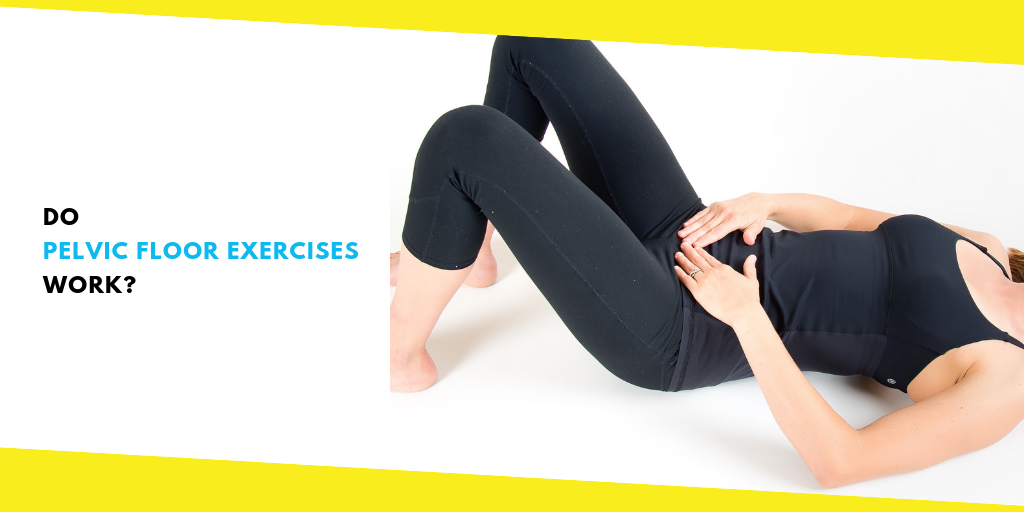Do Pelvic Floor Exercises Work? A Discreet Exercise with Big Benefits

The mental and physical benefits of pelvic floor exercises—commonly called “Kegels”—surprise many women. Those who practice Kegels encourage their friends to try it. They feel stronger, more in control, and happier about their body.
But, do pelvic floor exercises work? Read this post to discover when Kegels work, when they don’t, and how to do them.
When Pelvic Floor Exercises Work
Health authorities consider pelvic floor exercises vital for serious issues that affect the uterus, bladder, and rectum. Pelvic floor muscles weaken over time, from stress, and through events like childbirth, surgery, and strain.
An experts opinion would prescribe Kegels if you had any of the following emotionally-taxing issues:
- Leaking urine during sex, laughing, sneezing, or coughing
- Lose large amounts of urine after a sudden urge to urinate
- Involuntarily losing stool during everyday activities.
Kegels can also prevent these issues before they happen. Many pregnant women and new mothers practice Kegels to avoid incontinence associated with childbirth.
When Pelvic Floor Exercises Don’t Work
Most women find pelvic floor exercises give them a greater sense of control and satisfaction, but there are times when Kegels don’t work. For example, women who lose urine because their bladder is over-full won’t find help from pelvic floor exercises.
Women who leak urine during sneezing, coughing, or laughing will still find some benefit, but it may not alleviate leakage entirely. Incontinence and control will also not improve through Kegel exercise if you do not practice and exercise regularly.
Finally, pelvic floor exercise is not magic, and Kegels do not work overnight. You can expect to feel increased control and satisfaction after a few weeks of daily exercise.
How to Practice Pelvic Floor Exercises
If you want to make pelvic floor exercises part of your routine because you’re attracted to the control and satisfaction it can bring you, start small, but stay committed.
You shouldn’t struggle to find time for this exercise since you can do it at work, in the car, or at home while watching TV. But, you will need to remember to perform a certain number of reps several times per week.
Here are the four steps professionals recommend for getting started with pelvic floor exercises.
Target your muscles.
Your first task in your new Kegel routine is to find the right muscles. The next time you are urinating, stop midstream. These are the muscles you will use during pelvic floor exercises.
Practice contracting them in different positions, starting with lying down. If you are successful, proceed to perfect your technique.
Practice your technique.
After you have targeted your muscles and can control them in different positions, it is time to get advanced. Try tightening your pelvic floor muscles for a count of five. On another count of five, relax.
Work up to doing four or five repetitions of this counting technique. Then, try lengthening your count to six, eight, then ten seconds. After that, you can try something like the Gynie kegel exerciser.
Keep your focus.
Many people lose focus when they are exercising by concentrating too much on other areas such as their abs, thighs, or buttocks. They also think that pelvic floor exercises require much more time and effort than they really do.
Keep your exercise focused on the muscles you learned to target in the first step. This doesn’t mean you should close your eyes and hold your breath. Breathe freely, but maintain concentration.
Repeat to perfection.
Kegel exercises require focus, practice, and attention to technique at first. You will become an expert practitioner with time. Aim to make pelvic floor exercises part of your weekly or daily routine with repetitions throughout your day.
Conclusion
Pelvic floor exercises work. Doctors prescribe them for conditions affecting the uterus, bladder, and rectum. And, with a small commitment, women are pleasantly surprised by the benefits this discreet exercise brings their body.
They gain control, feel stronger, and stop incontinence from disturbing their sense of self. Women practice Kegels at home, in the car, and at work through focus, repetition, and a counting technique. If you want greater control over your body, give them a try.
Recommended For You
Top 8 Mango Shakes & Smoothies For Summer
Most Inside
Most Inside offers high-quality recommendations and valuable updates to enhance all aspects of your life, providing premium guidance and enriching experiences.




